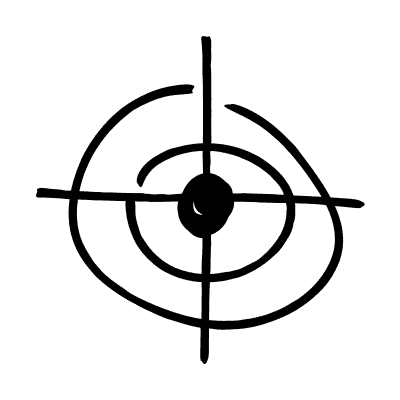Bull’s eye Diagram
Bullseye Diagram: making better decisions, together
The bullseye diagram is a visual tool for prioritizing activities based on urgency and importance to facilitate decision-making.
GOAL
Facilitate better decision-making and prioritization within teams using the bullseye diagram.
TOPIC:
DIFFICULTY:
Medium
In today's work environment, we often face complex decisions that require careful prioritization. In these cases, the bullseye diagram can be a valuable tool to facilitate the decision-making process and reach consensus within the team.
What is a bullseye diagram?
As the name suggests, the bullseye diagram is a graph structured like a target with three concentric circles. Each circle represents a level of priority:
Smallest circle (center): High priority - essential activities for achieving the goal.
Middle circle: Medium priority - important but non-urgent activities.
Largest circle (outer): Low priority - low-priority activities that can be postponed.
How does the bullseye diagram work?
Using the bullseye diagram is simple and intuitive:
Define the goal: Clearly establish the goal to be achieved with the decision-making process.
Brainstorm activities: List all the activities necessary to achieve the goal, without worrying about ordering them.
Prioritize: Discuss and assign the activities to the three circles based on their importance and urgency.
Evaluate and revise: Periodically review the bullseye diagram to adapt it to changing needs and priorities.
Advantages of the bullseye diagram:
Improves communication and collaboration: It promotes discussion and debate within the team, facilitating the sharing of ideas and reaching consensus.
Clarifies priorities: Clearly and immediately displays the most important activities, helping to focus on what matters most.
Promotes effective time management: Allows resources to be allocated efficiently, avoiding wasting time on non-essential activities.
Increases decision-making efficiency: Reduces downtime and speeds up the decision-making process, promoting greater productivity.
When to use the bullseye diagram?
The bullseye diagram is a versatile tool applicable in various situations:
Project planning: Define the priorities of activities in a complex project.
Problem-solving: Identify the root causes of a problem and establish the most effective corrective actions.
Option evaluation: Compare different options and choose the best one based on predefined criteria.
Resource allocation: Allocate available resources optimally among different activities or projects.
The bullseye diagram is a practical and versatile tool that can help teams and individuals make better decisions, increase productivity, and achieve common goals more effectively. Its simplicity and visual nature make it an ideal tool for facilitating collaboration and consensus within any workgroup.

